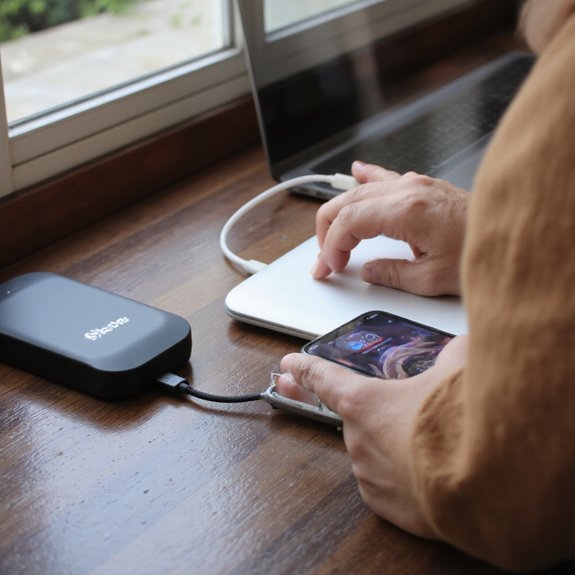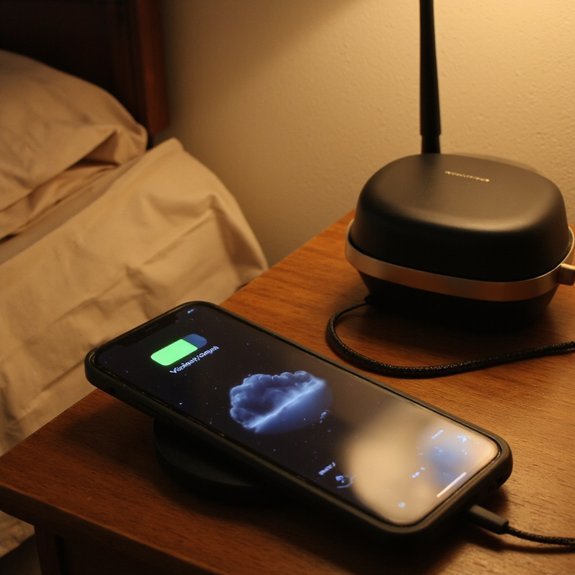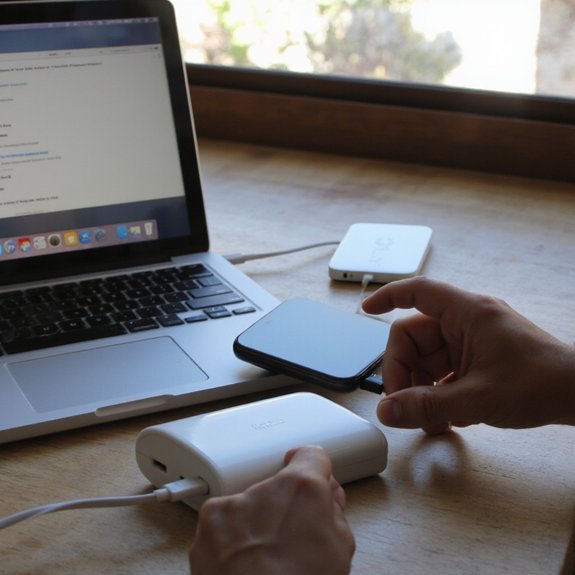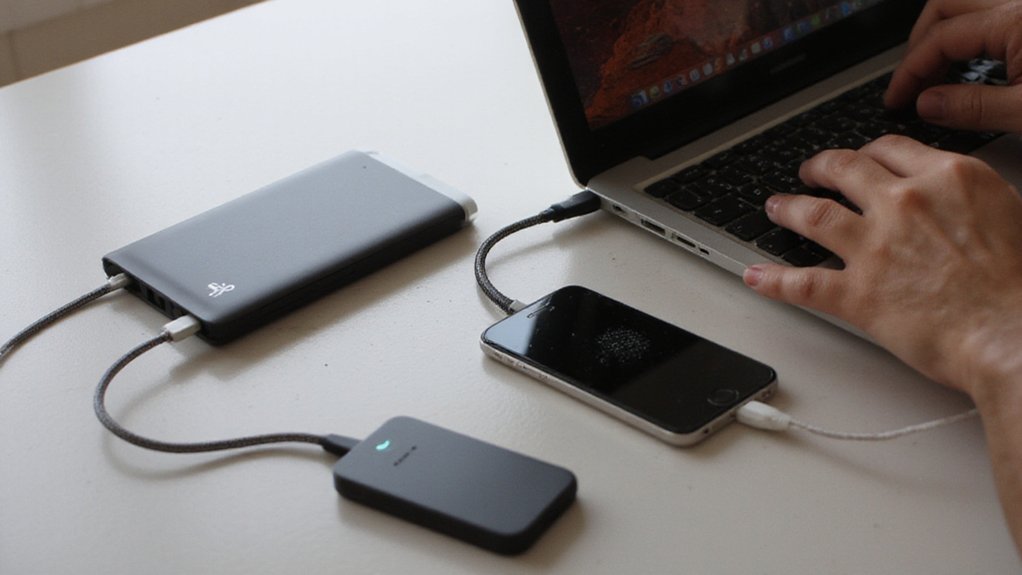Backing up your iPhone protects your data and settings, and you can use iCloud or a local computer backup via Finder or iTunes; you’ll want to choose encryption if you need passwords and Health data preserved. I’ll show step‑by‑step how to enable automatic iCloud backups, create encrypted local backups, export photos and messages, and verify integrity—so you’ll know exactly what to check before you rely on a restore.
Key Takeaways
- Enable iCloud Backup (Settings > [your name] > iCloud > iCloud Backup) to automatically back up daily when charging and on Wi‑Fi.
- Create encrypted local backups via Finder (macOS) or iTunes (Windows) by connecting your iPhone with a cable and selecting “Encrypt backup.”
- Manage storage and retention: delete old backups, upgrade iCloud plan, or archive local backups to external drives.
- Always encrypt backups to preserve Keychain, Health, and HomeKit data, and protect sensitive information with a strong password.
- Verify backups regularly by checking timestamps, testing restores on a spare device, and keeping at least one offsite copy.
Why Backing up Your Iphone Matters

Protection: backing up your iPhone guarantees you can recover contacts, photos, messages, app data, and settings after device loss, damage, theft, or a failed iOS update. You need a clear importance overview to prioritize backup strategy: frequency, storage location, encryption, and retention. Treat backups as part of your operational workflow so you can restore quickly and minimize downtime. You’ll validate backup integrity regularly and document recovery steps so restores are predictable. Focus on data loss prevention by automating where possible, versioning critical datasets, and isolating backups from the primary device to prevent simultaneous compromise. Use encrypted archives and strong access controls to protect sensitive information during storage and transit. When you design backup policies, include test restores, policy audits, and lifecycle rules to remove stale backups. That approach keeps recovery windows short, reduces business risk, and lets you iterate on backup design as your device usage evolves continuously.
Use Icloud Automatic Backups

Turn on iCloud Backup in Settings so you’ll get automatic saves of your device data. Pick a backup schedule—typically overnight on Wi‑Fi and while charging—to guarantee regular snapshots. Monitor and manage your iCloud storage by removing old backups or upgrading your plan so you won’t run out of space.
Enable Icloud Backup
Enable iCloud Backup so your iPhone automatically saves device settings, app data, Home Screen layout, and photos to Apple’s servers whenever it’s locked, charging, and on Wi‑Fi. To enable it, open Settings > [your name] > iCloud > iCloud Backup, toggle it on, and confirm with your Apple ID. Review iCloud storage and manage what apps include backup data to optimize space. Verify the last successful backup timestamp and tap Back Up Now for an immediate snapshot. Ascertain your device stays connected to power and Wi‑Fi until completion. If you need encryption or additional control, use iCloud Keychain for credentials and check backup settings for app-specific exclusions. You’ll rely on this automated process to restore or migrate devices reliably. Confirm backups before major updates.
Set Backup Schedule
If you want hands-off protection, set iCloud to back up automatically so your iPhone saves a full device snapshot whenever it’s locked, charging, and on Wi‑Fi. To confirm, go to Settings > [your name] > iCloud > iCloud Backup and toggle On. The system runs daily when conditions match; you can’t change that cadence, but you can supplement with setting reminders for periodic manual backups or audits. Use Shortcuts or Reminders to enforce a custom cadence if you need different choosing frequency than daily. Verify backup timestamps in Settings to assure snapshots complete. Keep iOS updated to maintain backup reliability and encryption. This approach minimizes risk, automates routine state capture, and gives you control over extra checks without altering automatic behavior or scheduling preferences.
Manage Backup Storage
When iCloud automatic backups run, they’ll use your iCloud storage quota, so you should monitor usage, remove obsolete device snapshots, and control which apps and data are included or excluded to avoid running out of space or incurring extra costs. To manage storage efficiently, open Settings > [your name] > iCloud > Manage Storage, review backup sizes per device, delete old device backups, and toggle app-level backup settings. Prioritize critical data, exclude large media you already sync elsewhere, and enable iCloud Photos only if needed. For optimizing backups, compress app-specific data where supported and use selective restore testing to verify integrity. Monitor growth trends, upgrade plans only when justified, and automate alerts or scripts to keep backup footprint predictable and cost-effective for reliability assurance.
Backup via Finder or Itunes on a Computer

Although macOS replaced iTunes on newer systems, you still back up your iPhone to a computer by connecting it with a Lightning or USB‑C cable and using Finder (macOS Catalina and later) or iTunes (older macOS and Windows). Plug in, access the device, and trust the computer; then select the device in Finder or iTunes. Use Finder options to choose whether to sync content, manage backups, or trigger an immediate backup. In iTunes setup, click Summary and choose Back Up Now to create a local copy. Keep software current—macOS, iTunes, and iPhone OS—to avoid compatibility issues. Verify backup completion by checking timestamps in Finder or iTunes. If storage is limited on your Mac or PC, move older archives to external storage. After backup, eject the device safely. These steps give you control over local backups, reduce dependency on cloud services, and integrate cleanly into development or device-management workflows.
Encrypting Backups to Save Passwords and Health Data
You should encrypt your iPhone backups to protect sensitive items like saved passwords, Health and Activity data, and Wi‑Fi settings from unauthorized access. Encrypted backups also preserve Keychain entries, HomeKit data, and other information that unencrypted backups skip. When you enable encryption in Finder or iTunes you set a password that’s required to restore the backup, so keep it safe or you’ll lose access to that data.
Why Encrypt Iphone Backups
If you need to preserve saved passwords, Health data, and other sensitive items, encrypt your iPhone backups — iCloud or local — so those credentials and protected databases are included and accessible after a restore. You’ll maintain confidentiality and integrity by using vetted encryption methods and strict key management, improving data protection and recovery confidence. Encryption reduces attack surface for backups at rest and in transit, and it enforces access controls tied to your passphrase or device key. Plan key recovery and store credentials securely; losing the key can make backups irrecoverable. Use automation and modern tooling to integrate encrypted backups into your workflow.
| Aspect | Benefit |
|---|---|
| Key management | Retains access |
| Transport security | Protects in transit |
| Local encryption | Offline resilience |
| Compliance | Meets regulations |
Follow best practices continuously.
What Encrypted Backups Include
One encrypted iPhone backup includes your keychain (saved passwords and Wi‑Fi credentials), Health and Fitness data, HomeKit configurations, Wallet passes, and other protected databases that plain backups skip. You’ll also preserve app tokens, secure settings, and biometric enrollment metadata when you enable encryption. These encrypted backup features guarantee restoration fidelity and limit exposure during transit or storage by applying device-derived keys and strong encryption.
- Keychain & credentials: restores passwords, Wi‑Fi and authentication tokens.
- Health, Fitness & HomeKit: keeps sensitive sensors, activity history, and smart‑home states intact.
- Wallet & app data: preserves payment passes, secure app containers, and biometric metadata.
Adopt encryption as a core data security measure to maintain continuity and privacy. You’ll verify backups, rotate keys, and test restores monthly.
Manually Backing Up Photos and Videos
When you want direct control over your media backups, manually exporting photos and videos creates local copies outside iCloud and simplifies recovery. You’ll connect your iPhone to a Mac or PC and use Finder or File Explorer to copy the DCIM folder, or export selected items via the Photos app. For large batches consider using third party apps that support bulk export, automated renaming, and checksum verification. If you prefer networked storage, transfer via SMB, SFTP, or a NAS client to maintain versioning and metadata. For redundancy, combine local disk copies with encrypted cloud storage alternatives or object storage buckets that offer lifecycle policies. Verify integrity by comparing file sizes and hashes, and keep a clear folder structure and naming convention to speed restores. Schedule periodic exports, document your procedure, and test restores to guarantee your workflow is reliable, scalable, and fits an innovative backup strategy and repeat.
Saving Messages and Attachments Separately
Because message text and attachments have different size, retention, and metadata needs, you should export them separately to optimize storage, searchability, and restore processes. Separate exports let you apply different compression, indexing, and retention policies: keep conversation logs compact and searchable while storing high-resolution attachments on cheaper object storage. For saving text messages, export messages as JSON or CSV with timestamps, sender IDs, and conversation IDs to enable rapid search and selective restore. For exporting media files, use original-file preservation, hash-based deduplication, and CDN-ready structure. Automate transfer with scripts or tools that talk to iOS backups or APIs, and verify integrity with checksums.
Export texts separately from attachments: compact, searchable JSON/CSV for messages and deduplicated original media in object storage.
- Export messages: JSON/CSV with metadata, compress lightly for fast search.
- Export attachments: preserve originals, dedupe, store in media buckets.
- Index and link: maintain a manifest mapping messages to attachment URIs for selective restores and efficient retrieval.
Test restores regularly to guarantee reliability.
How Often to Back Up and Scheduling Tips
If your iPhone contains frequently changing or critical data, schedule backups to match change rate and risk tolerance: enable automatic iCloud backups for daily protection, add a weekly encrypted local or cloud full backup for system images and app data, and trigger immediate backups before iOS updates, travels, or config changes. Decide backup frequency based on data volatility: set daily iCloud for dynamic apps, weekly full images for system state, and hourly sync for project-critical files via third-party services. Use scheduling reminders tied to calendar events and device state—low battery, locked, on Wi‑Fi—to avoid interruptions. Automate when possible: leverage Shortcuts or MDM policies to initiate local transfers when connected to trusted networks. Monitor storage quotas and rotate backup sets to maintain retention without exceeding limits. Test the cadence a month and adjust backup frequency and scheduling reminders to balance recovery point objectives with storage costs and operational simplicity.
Checking, Restoring, and Troubleshooting Backups
After you’ve established a backup cadence, regularly verify that backups complete, are restorable, and contain the data you need. You should perform automated backup verification and occasional manual checks: view the timestamp and size in Settings or iCloud, test a selective restore to a spare device or simulator, and confirm encryption and app data presence. When you encounter restoration issues, isolate causes—network, iOS version mismatch, corrupted archive, or account credentials—and address them systematically. Keep a fallback local backup and document restores so you can reproduce fixes quickly. Automate alerts for failed jobs and rotate backup retention to minimize data loss risk. Use versioned backups and verify cryptographic signatures where available. Regularly audit.
- Check: confirm latest backup timestamp, size, and encryption status.
- Test: restore a small dataset to a secondary device to validate integrity.
- Troubleshoot: capture logs, update iOS, retry, and contact Apple Support if unresolved.
